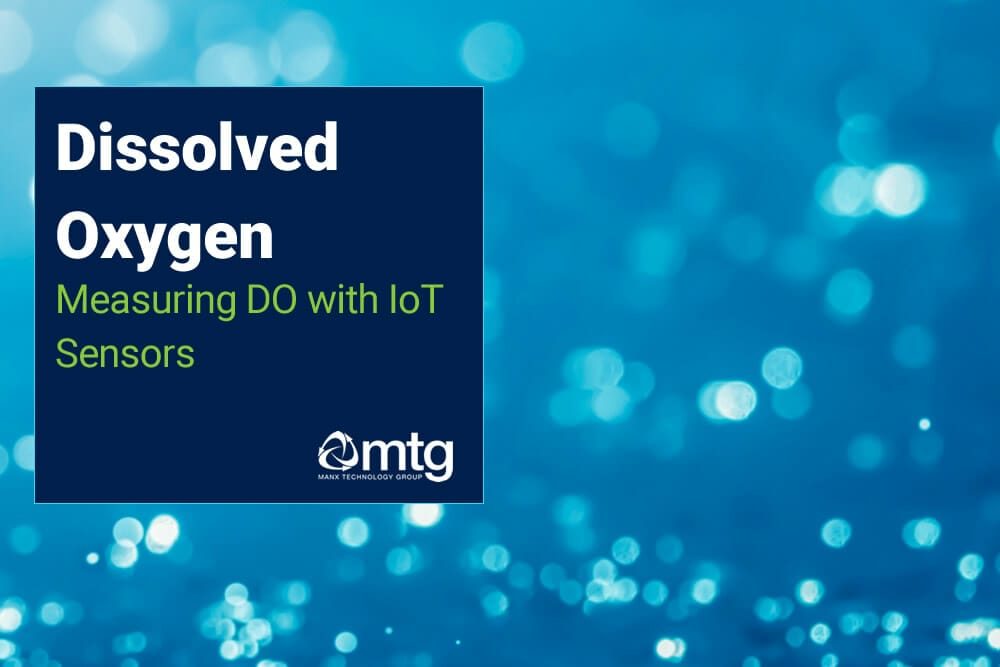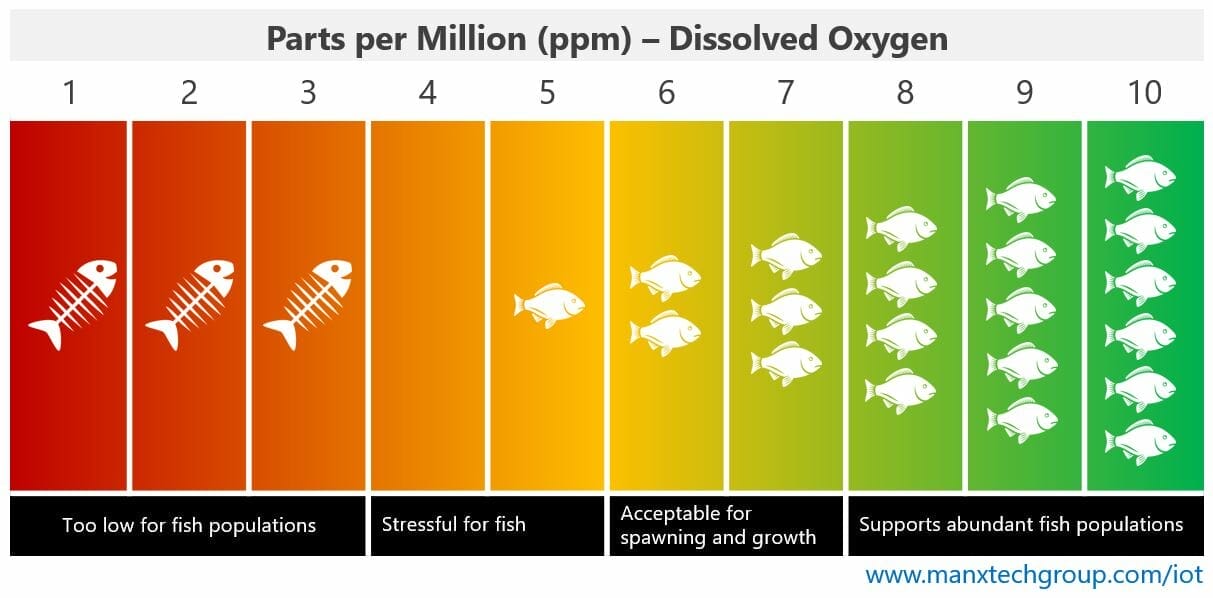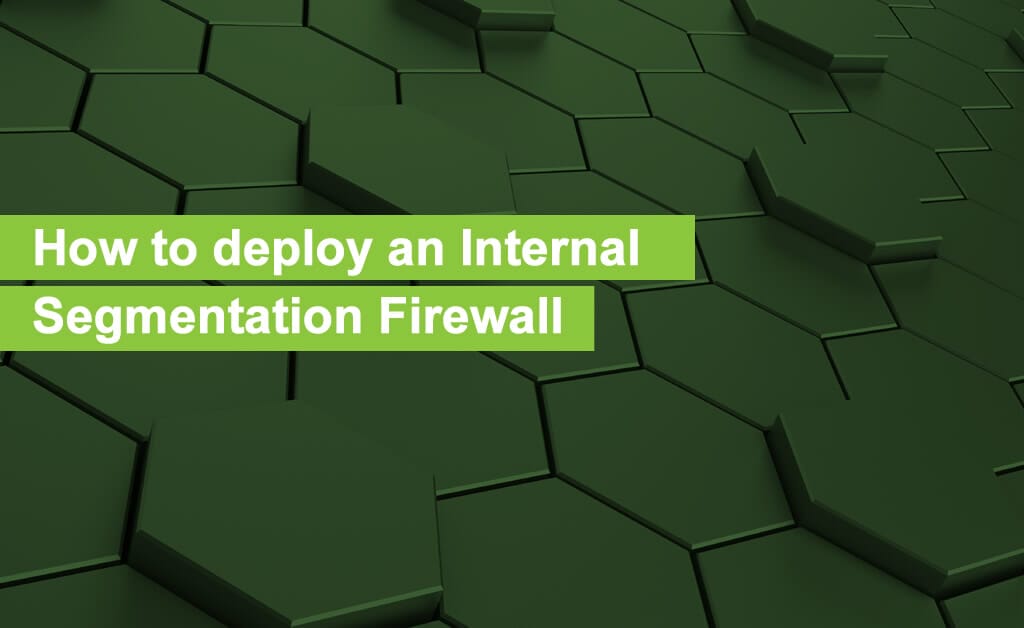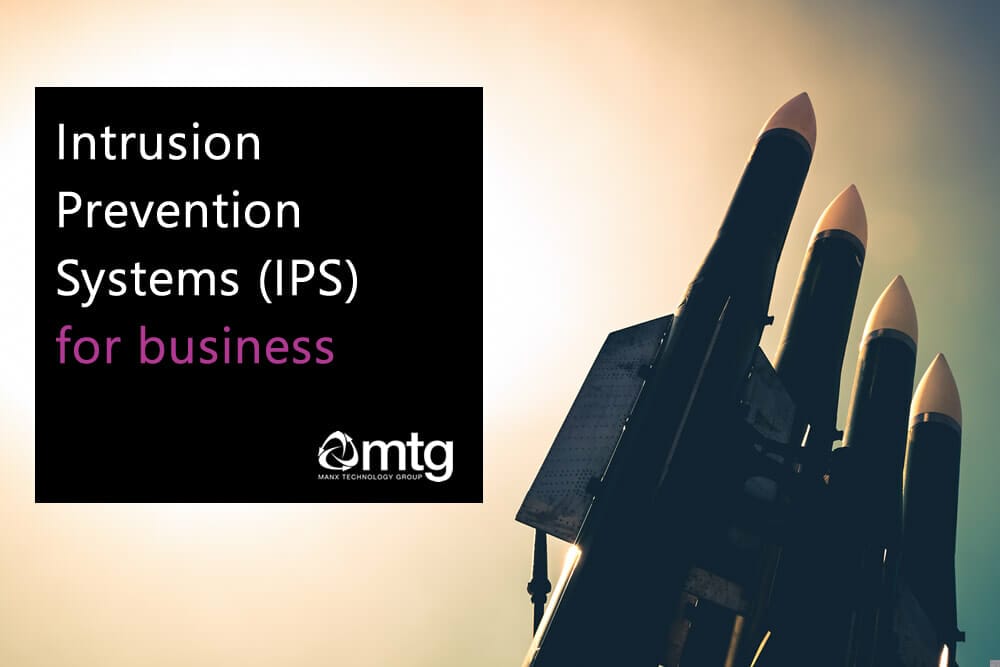Dissolved Oxygen (DO) is perhaps one of the most critical indicators of water quality. IoT (Internet of Things) dissolved oxygen sensors are used to accurately measure the oxygen content in water and transmit the results in real-time back to a central database, cloud or water monitoring platform.
Dissolved oxygen refers to the level of free oxygen present in the body of water; oxygen is vital for the survival of fish and other aquatic lifeforms. The ability to automatically and accurately measure DO in a body of water using IoT equipment offers several advantages over traditional methods.
How does oxygen get into the water?
Oxygen can enter a water system in several ways, but these methods are generally categorised as surface-aeration and sub-surface aeration.
- Oxygen from the atmosphere can dissolve and mix into the water’s surface. Examples of atmospheric surface aeration could include the wind disturbing the surface of the water, movement from streams, waterfalls or similar flows of water.
- Algae and other underwater grasses create oxygen through photosynthesis and will release this into the water. Oxygen is then used by fish and also important aerobic bacteria that can break down excess nutrients in the water.
Further information relating to oxygen aeration is available here:
What is the right level of Dissolved Oxygen?
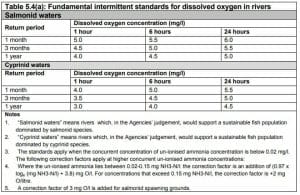
As previously mentioned, Dissolved Oxygen is a critical component of any healthy aquatic system or watercourse. Therefore it is essential to ensure DO levels are optimal. Dissolved oxygen in water can range from 0-18ppm (parts per million), while a healthy aquatic system should have DO levels of around 5-6ppm.
Local authorities, environment agencies and utilities all have a responsibility to measure DO levels regularly. Fishing pond operators and fish farms are similarly interested in maintaining healthy levels of dissolved oxygen.
DEFRA has a document that outlines that Fundamental Intermittent standards for dissolved oxygen in rivers. The DEFRA levels are illustrated in the image to the right.
Dissolved Oxygen Levels for Fish/Aquatic Life
How to measure dissolved oxygen in water?
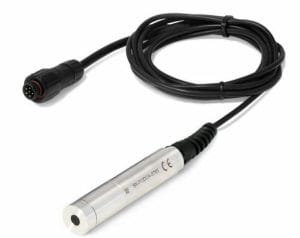
Several different sensor types can be used to measure dissolved oxygen in water. Sensors are typically classified as electrochemical or optical; these can be further classified into polarographic, pulsed polarographic and galvanic. The typical sensor types are listed below:
- Optical dissolved oxygen sensors. OPTOD sensors work by measuring the interaction between oxygen and luminescent dyes after exposure to blue light. The sensor measures the altered wavelengths that indicate the presence of oxygen. OPTOD sensors are supported on the Libelium Smart Water Xtreme IoT platform, with stainless and titanium sensors (depending on freshwater or salt-water deployments).
- Polarographic (and pulsed polarographic) dissolved oxygen sensors. Polarographic sensors are considered a type of electrochemical sensor utilises electrodes, a semi-permeable membrane, and an electrolyte solution. When the sensor is measuring oxygen levels, dissolved oxygen diffuses across the membrane – when consumed at the cathode, this creased a reaction that can be measured by the sensor (therefore measuring the oxygen content).
- Galvanised dissolved oxygen sensors have electrodes made from dissimilar metals (i.e. anode = zinc, lead or active metal; cathode = silver or noble metal) and feature a membrane and electrolyte as with the polarographic sensors. The galvanised DO sensors use the concept of self polarisation.
MTG supplies OPTOD and Ganvalic DO sensors – for use with 4G or LoRaWAN
Dissolved Oxygen Sensor types compared
| Type | Pros | Cons | IoT Support |
|---|---|---|---|
| Optical |
|
|
OPTOD (optical dissolved oxygen and temperature) sensors are supported on the Libelium Smart Water Xtreme platform, with support for LoRa/4G/WiFi/GPS/Sigfox |
| Galvanic |
|
|
Galvanic dissolved oxygen sensors are supported on the Libelium Smart Water platform, with support for LoRa/4G/WiFi/GPS/Sigfox |
| Polarographic |
|
|
n/a |
Note
* Electrochemical sensors that utilise a membrane and electrodes are sensitive to the presence of hydrogen sulphide. The presence of hydrogen sulphide can cause electrode fouling and introduce additional cleaning requirements to maintain accurate measurements.
≠ Galvanic sensors consume a small amount of oxygen with each measurement. Therefore it is recommended only to use galvanic sensors where there is water flow/movement (60ml/min recommended).
IoT Dissolved Oxygen Sensors (Libelium)
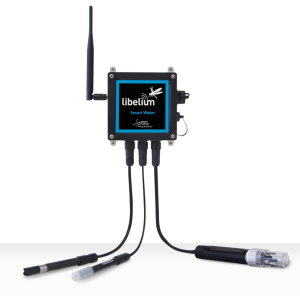
The Libelium Plug & Sense Smart Water and Smart Water Xtreme support two types of IoT sensors that can be used to measure dissolved oxygen in the water.
- Smart Water – Dissolved Oxygen Sensor. This is a galvanic cell sensor that can measure DO in the range 0-20mg/L with an accuracy of ±2%. The sensor produces a voltage proportional to the dissolved oxygen in the solution. The sensors include a 5m cable.
- Smart Water Xtreme – Optical dissolved oxygen and temperature sensor probe. The OPTOD probe uses luminescent optical technology that is better suited to long-term or remote IoT monitoring of dissolved oxygen. The OPTOD probe is highly accurate, even in low-flow water systems or with low concentrations of dissolved oxygen.
The OPTOD probe can measure DO in the range 0-20mg/L to a resolution of 0.01, with an accuracy of ±0.1 mg/L or ±1%. The sensor can be cross-sensitive to the presence of organic solvents such as acetone, chloroform or chlorine gas. Temperature is measured in the range of 0-50°C. The sensor includes a 15m cable and is IP68 rated.
Is there anything else I need to consider when measuring Dissolved Oxygen (DO) with IoT?
The Dissolved Oxygen (DO) levels in water are also dependent upon atmospheric pressure, temperature and salinity – therefore, it is also recommended to measure these factors in any deployment. Fortunately, temperature, pressure and salinity are also supported by the Libelium platform. Atmospheric pressure and temperature are supported by the Bosche BME280 sensor, while salinity is supported using the Inductive conductivity, salinity and temperature probe (CTZN).
- Temperature. At atmospheric pressure and 20°C, the maximum amount of oxygen that can be dissolved in water is 9.2mg/L, at 25°C this decreases to 8.3mg/L, and at 50°C the level is 5.6mg/L. When you consider colder temperatures such as 5°C, the solubility levels increased to 12.8mg/L. What this shows is that variance in DO levels can be attributed to temperature.
- Pressure. Solubility is directly proportional to pressure and therefore, is impacted by atmospheric pressure and altitude.
To read more about the influence of temperature and pressure on Dissolved Oxygen (DO) measures, please read the following articles:
- https://www.elscolab.com/en/news/do-you-know-the-influence-of-temperature-and-pressure-on-your-dissolved-oxygen-measurements
- https://www.fondriest.com/environmental-measurements/parameters/water-quality/dissolved-oxygen/
How much does a Dissolved Oxygen Sensor cost?
For a complete IoT node that measures oxygen in water (DO), Atmospheric pressure and Temperature, the cost can range from £1,200 to £3,000 – depending on the type of sensor and sensor body. i.e. Titanium OPTOD sensors are more expensive than plastic galvanic DO sensors. Another consideration is power (i.e. battery and solar) and communications (i.e. 4G, LoRaWAN, Zigbee).
Learn more
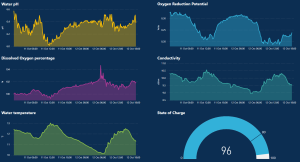
If you would like to learn about our range of Dissolved Oxygen (DO) sensor systems, and how Dissolved Oxygen can be measured with IoT – please speak to our solutions team.
Manx Technology Group has worked on numerous IoT projects involving aquaculture, local government, academia/research and utilities. Libelium Plug & Sense Smart Water and Smart Water Xtreme can measure a range of values associated with water health, before transmitting the data back for visualisation and analysis on platforms such as Microsoft Azure, PowerBI, Tableau and your own database/application servers.
To find out more, call +44 1624 777837, e-mail sales@mtg.im or submit the ‘Request a Quote’ form on the right-hand side.
Related Articles
- Monitoring water quality with IoT and Microsoft Azure
- Measuring Turbidity with IoT
- Measuring bathing water quality with IoT
- Internet of Things Applications: Smart Water
- Libelium Plug & Sense: Smart Water
- River level monitoring with IoT
Also, look what else you can monitor with IoT.
[sc name=”blogfooter” ]

